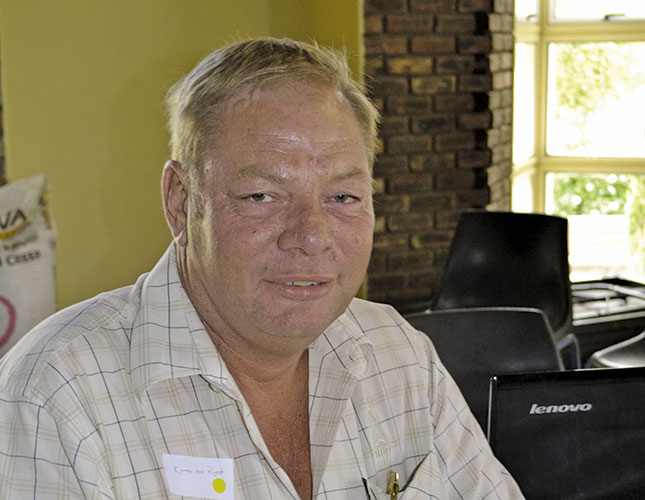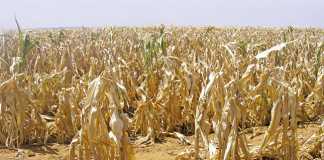
On the surface, it appears that the middleman is all that livestock farmers and consumers have in common. Indeed, when auction results and the price of rump (or any other cut of meat) are compared over time, it becomes apparent why many farmers believe all is not well within the value chain. There is a widely-held belief within the industry that supermarkets determine meat prices and that there is an uncorrelated profit margin between consumers and producers.
READ:Predicting the future of farming
Furthermore, there has been much speculation around South African braais that the middleman’s profit margin might be growing. This stance is supported by the information on Graph 1. But how true are these assumptions? This was the subject of a major discussion at the RPO congress held in Kimberley last month.

Farmers under pressure
Bart Duffy, member of the Ghaap Farmers’ Union, says the RPO needs to investigate the lowering of producer prices and the seemingly constant growth of consumer prices. “We are probably the only organisation in South Africa whose income (margin) has shrunk. Do you want to know what the majority of farmers’ income statements look like? It’s frightening. We can’t go on strike and yet this matter needs urgent attention.”
Many farmers have been brought to their knees by the drought, and have been forced to sell breeding animals. Duffy says that current meat prices are far below those of two years ago. According to him, weaners were sold at about R20/kg in 2011 but now prices had dropped. “Lamb is being sold at about R18/ kg with weaners sold at between R13,50/ kg and R15/ kg. Cows and bulls are sold at about R10/kg and R10,50/kg respectively. This, while an abattoir in our region sells oxtail at R52/kg and tongue for R60/ kg, while more sought-after cuts aren’t sold for less than R60/kg.”
Duffy stresses that higher prices discourage consumers from buying more meat. He suggests that the sheep and beef committees be revived to investigate issues at ground level, as the committees would be able to communicate first hand with farmers, butchers and consumers.
Retail price comparison
Frikkie Maré, an agricultural economist from the University of the Free State, monitored meat prices on three supermarkets as well as a butchery in Bloemfontein to see if they were aligned. Because there is a delay of three weeks between slaughter and the time when the meat ends up on a retailer’s shelf, Maré inserted a three-week lag between the
monitoring of farmgate and retail prices.
He focused on retail, as other sections of the value chain were seemingly not in a position to interfere with the pricing model. “Feedlots are in the same boat as farmers, and abattoirs mostly profit from sales of the fifth quarter,” he explains.
Maré focused on the difference between retail prices and farmgate prices. He used the meat block test to determine the pricing of individual cuts at various retailers. During such a test, a butcher does a cost assessment of different meat cuts from the carcass.
“Each supermarket priced its cuts differently,” explains Maré. “The pricing is determined by the type of client the retailer serves. In one area, a shin will be valuable, while clients in another will have no use for it.” After evening out meat prices according to the block test, Maré found that there was much more correlation between carcass and retail prices (Graph 2).
He then conducted three tests – the stationary, Johansson co-integration and Granger causality tests.

Through the stationary test, Maré tried to see if the variables changed over time. “If carcass and consumer prices change or remain stagnant over time, there’s a chance that they might be linked,” he says. For two of the three supermarkets, as well as the butcher, prices did vary, proving that they were linked. With the third supermarket, prices remained stagnant, indicating that there might not be a relationship between their retail and carcass prices. “They probably tried to keep prices stagnant in order to cover losses of when carcasses were more expensive,” says Maré.
Through the Johansson co-integration test, scientists determine if there is a relationship between the variables over an extended period. In theory, a correlation would imply that they will once again have a relationship – even if there was a short period of time where the two failed to correlate. Again, only one of the retailers showed a deviation from the expected results. It was the same supermarket that did not show a relationship between carcass and consumer prices.
The last test – Granger causality – determines the direction of the relationship between the variables. In other words, do consumer prices influence farmgate prices or do farmgate prices determine retail prices?
Two of the supermarkets and the butcher showed that not only did the carcass price follow the consumer price, but that the inverse was true. Consumer prices are also influenced by carcass prices. This was, however, untrue for the supermarket that deviated earlier on. “We finally established that all but one supermarket’s prices changed over time. These changes have a long-term influence on carcass prices but in turn, they are also influenced by the carcass price,” Maré says.
In the end, only one of the retailers could be branded as a “black sheep” that dictated pricing. Maré, however, decided to keep the supermarket anonymous. “I should, however, explain that this study might not be a true reflection of the market.
“We monitored prices for 52 weeks which is not nearly long enough. It is, however, enough data to safely say supermarkets alone do not influence meat pricing.”
Beware of finger-pointing
Charl Saunderson, Voermol’s Sheep Farmer of the Year 2012, warned farmers against reckless finger-pointing. “We need to protect our value chain. It’s important that any action henceforth taken be done carefully. Supermarkets have served us greatly in the past and we should remember that,” he said. Saunderson suggested that the organisation rather look at matters such as imports, and ensure that imported meat was in line with the protocol involved.
Koos van der Ryst, vice-chairperson of the RPO, also said that care should be taken when looking into the matter. “You need to keep in mind that everybody in the value chain needs to survive. “Farmers have a 52% share in the consumer price of mutton. When you discard VAT, the remainder is probably reasonable for the rest of the chain. “We need to be certain of what we are trying to achieve before we act,” he said.
Supermarkets or butchers buy a whole carcass and need to balance it. In other words, if people don’t like buying a certain cut, the shop needs to make up for that possible loss by selling other pieces of the carcass at a higher price. Mutton still beats inflation by 2% per annum and yet sheep farmers are struggling to remain afloat, Van der Ryst said.
“Our terms of trade have changed. In the end, the RPO can do a lot of things but only God can make it rain. If we receive good rains in the coming season, the weaner price will improve, but unfortunately that will also not be due to the RPO. Ultimately, the market determines pricing.”
Changing needs of consumers
Farmers should not be naive about the changing need of consumers, Maré said. “Consumers don’t buy meat with a rand per kilogram mindset. They buy with meat on a rand per portion basis.” Furthermore, consumers do not have the space to buy in bulk because modern townhouses are not planned with a deep freezer in mind. “Few people have space for large freezers so modern consumers can’t buy a whole carcass at one time. They simply don’t have the space.”
For more information, contact Frikkie Maré on 053 401 3220, email [email protected] or visit www.ncrpo.co.za.
This article was originally published in the 19 July 2013 issue of Farmer’s Weekly.













